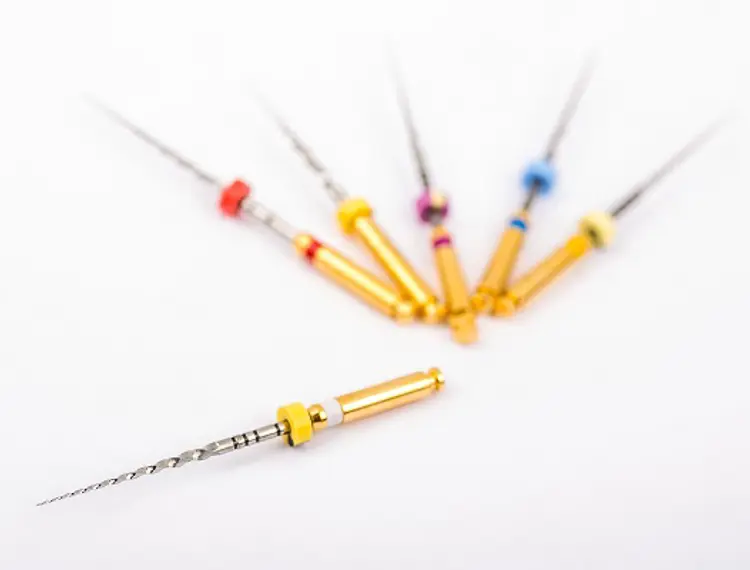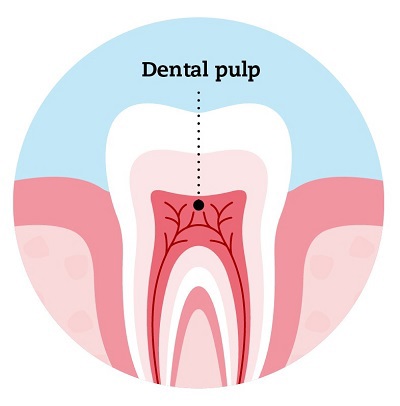
Key messages
- Root canal treatment can save a badly damaged or infected tooth rather than removing the tooth from the mouth.
- The treatment involves cleaning the space inside the tooth where the nerve tissue was present. This space is filled with a filling.
- The alternative treatment option will usually be to remove the tooth.
- A root canal specialist is called an endodontist.
A root canal treatment is done to repair and save a badly damaged or infected tooth instead of removing the tooth from the mouth. The space inside the tooth where the nerve tissue was present is cleaned and a filling is put in its place. Root canal treatment can be done by a general dentist or by a root canal specialist, called an endodontist.
What is the dental pulp?
The dental pulp is the soft tissue located in the centre of your tooth. It travels down the tooth roots and includes nerves and blood vessels.

A tooth can function without a dental pulp. The dental pulp can be removed and replaced with a filling during a root canal treatment.
What can damage the dental pulp?
The dental pulp can be damaged by:
- Tooth decay that travels into the dental pulp causing a severe inflammation or infection.
- Severe trauma from a sports injury, a car accident or a fall.
- A crack in the tooth that extends into the dental pulp letting bacteria into the area.
What are the signs that I may need a root canal treatment?
There are some signs and symptoms that mean you might need a root canal treatment.
- Severe pain that does not go away after taking pain medication.
- Severe pain when biting together or while chewing.
- A pimple on the gums next to a tooth.
- Tooth pain from hot or cold items that continues even after the item has been removed from the mouth.
- Tooth decay that extends deep inside that that may or may not cause pain.
- A swelling inside the mouth or affecting the face.
What happens during the treatment?
A root canal treatment may take one appointment or multiple. During a root canal treatment the following procedure occurs:
- Local anaesthetic is given to make sure the treatment is pain-free.
- A rubber dam is used to keep the tooth being treated away from the rest of the mouth.
- The dental pulp is located.
- The dental pulp tissue is removed.
- The space where the dental pulp tissue was removed from is disinfected.
- The disinfected space is filled with a filling material called gutta-percha.
- The root canal filling is sealed so that bacteria can get into the space.
- The crown of the tooth is fixed with a filling or a crown.
Dental x-rays are a key part of root canal treatment. Your dentist may ask to take an x-ray before, during and after treatment. These x-rays help your dentist to see inside your tooth.

An x-ray of a completed root canal treatment. Getty images.
Why is rubber dam used for root canal treatment?
A rubber dam is a square sheet of latex that is used to keep teeth having treatment away from the rest of the mouth. Non-latex rubber dams are available. It is a very important part of root canal treatment and can impact treatment success. A rubber dam is used during root canal treatment to:
- stop saliva from going into the treatment area. The bacteria in saliva can contaminate the tooth that the dentist is disinfecting
- small instruments and disinfectant liquids are used as part of treatment. The rubber dam provides a safe space for these to be used away from the rest of the mouth and throat.
Does root canal treatment hurt?
Your dentist will use local anaesthetic to make your treatment comfortable.
You may have some discomfort after your treatment, however many people do not. Your dentist will provide advice about what pain relief to use after your treatment. Contact your dentist if your pain does not go away.
What happens after the root canal treatment?
After a root canal treatment, your tooth may need either a filling or a crown. Your dentist recommend what is best for the tooth and tell you this before starting the root canal treatment so you know all of the treatments you will need. Your dentist will look at a few factors when choosing between a filling or crown, including:
- the location of your tooth in your mouth
- the amount of pressure you put on the tooth
- the amount of natural tooth still present.
Why is a crown important?
Research shows that fixing a tooth with a crown after root canal treatment helps it to last longer.
Molar teeth are used to chew food which puts them under a lot of pressure. Molar teeth are often recommended to be fixed with a crown after a root canal treatment. This protects the tooth from the chewing forces. Research has shown that covering of the tooth in this way will increase the tooth's life span. It stops bending and flexing which can cause teeth to break.
Research shows that a tooth fixed with a crown after a root canal treatment has a greater chance of surviving for a longer amount of time. A research study showed that the number of years that a root canal treated molar tooth lasted, decreased significantly if a crown was not used to fix the tooth.
- 96% survived after 1 year
- 88% survived after 2 years
- 36% survived after 5 years.
Another research study reported that teeth that had a root canal treatment but not a crown were 6 times more likely to be removed than teeth that had a root canal treatment and a crown.
What are my other treatment options?
The only alternative to a root canal treatment is to remove (extract) the tooth from the mouth. If the tooth is removed, you will need to pay for further treatment to have the missing tooth replaced in the mouth. Replacing the tooth is optional and your dentist will explain the possible consequences that may occur if the tooth is not replaced.


